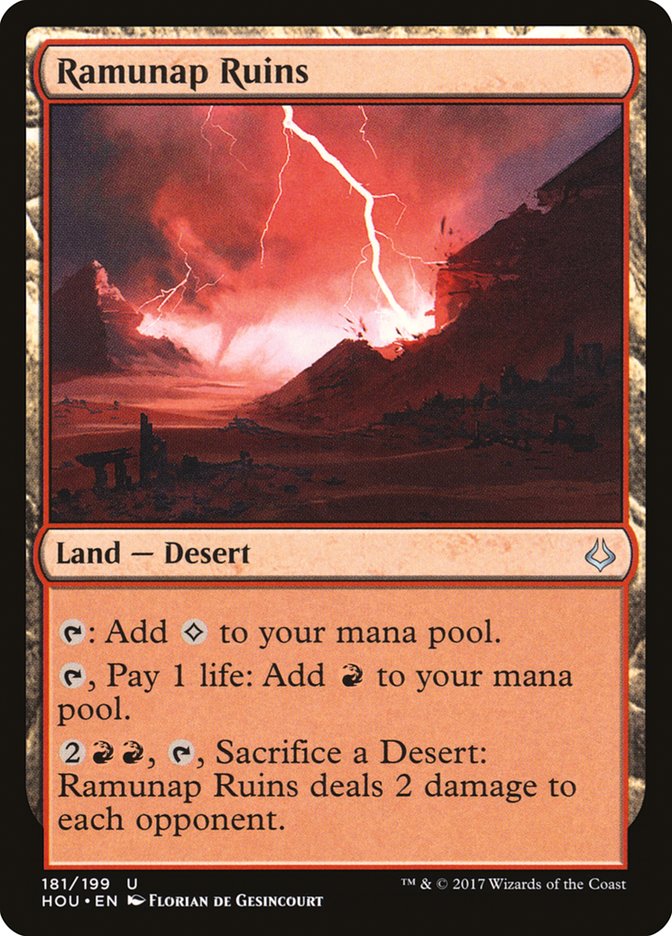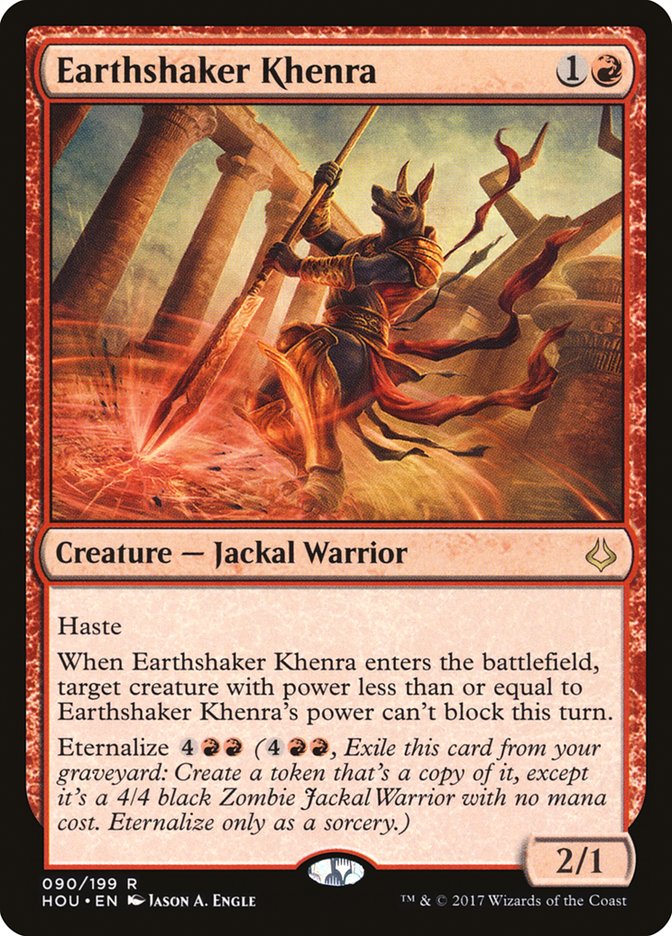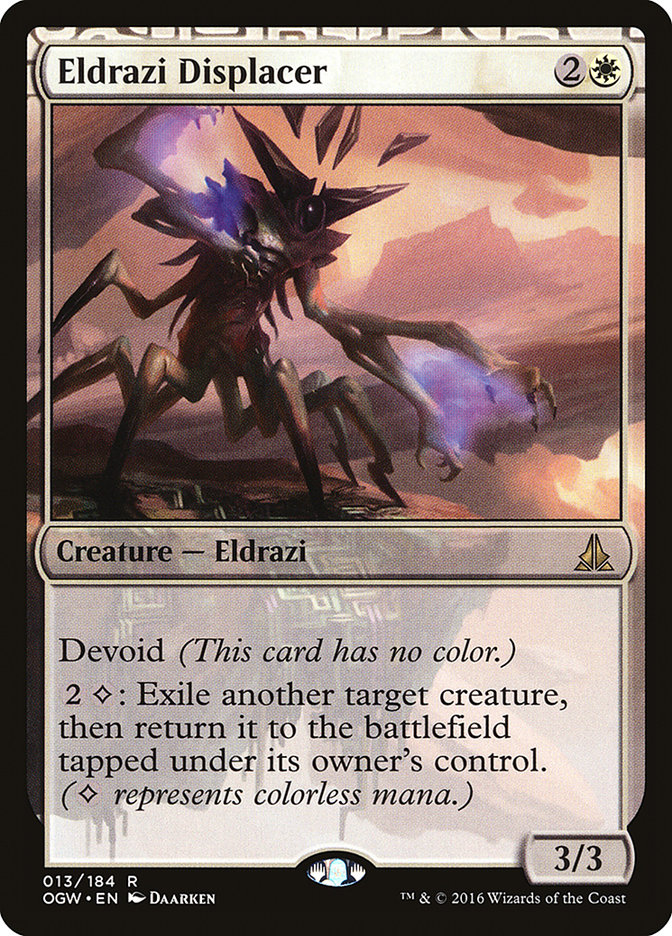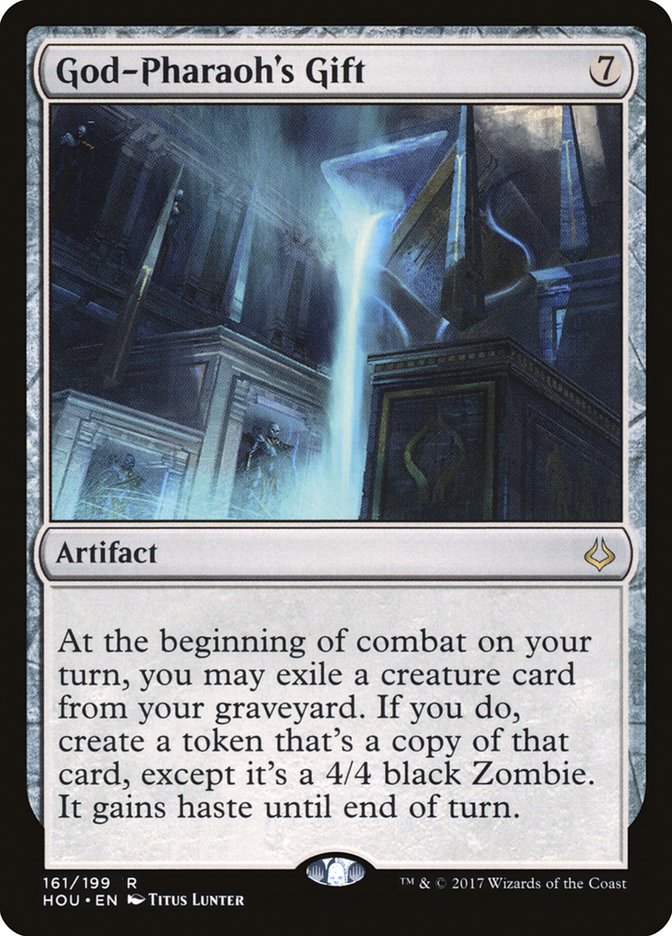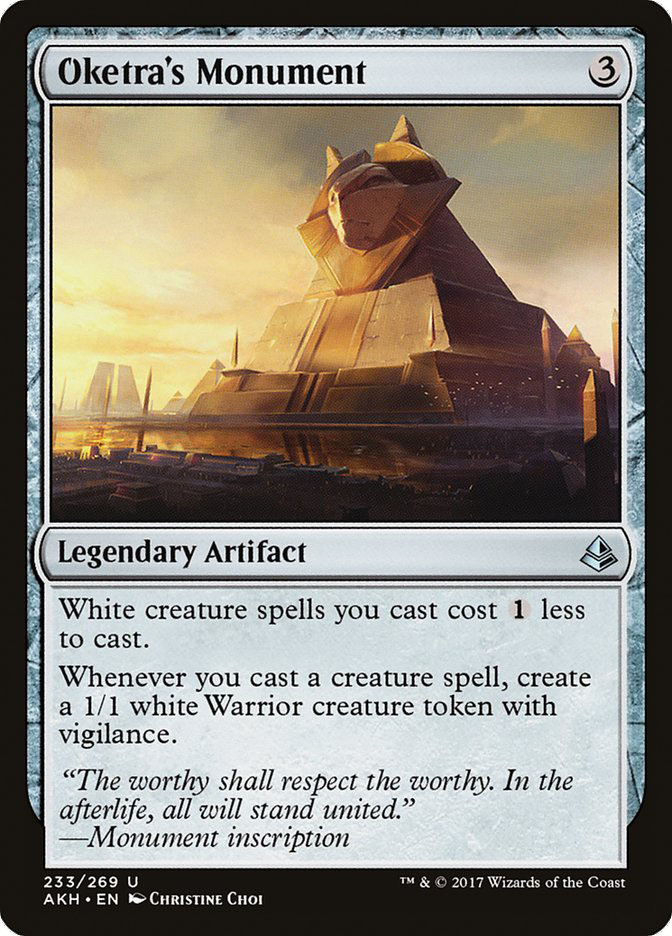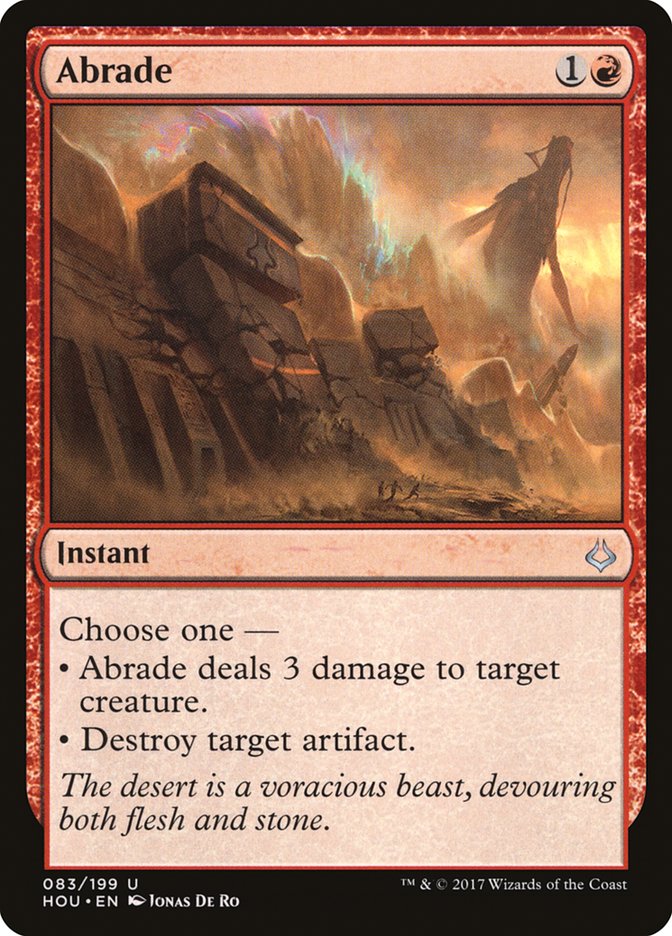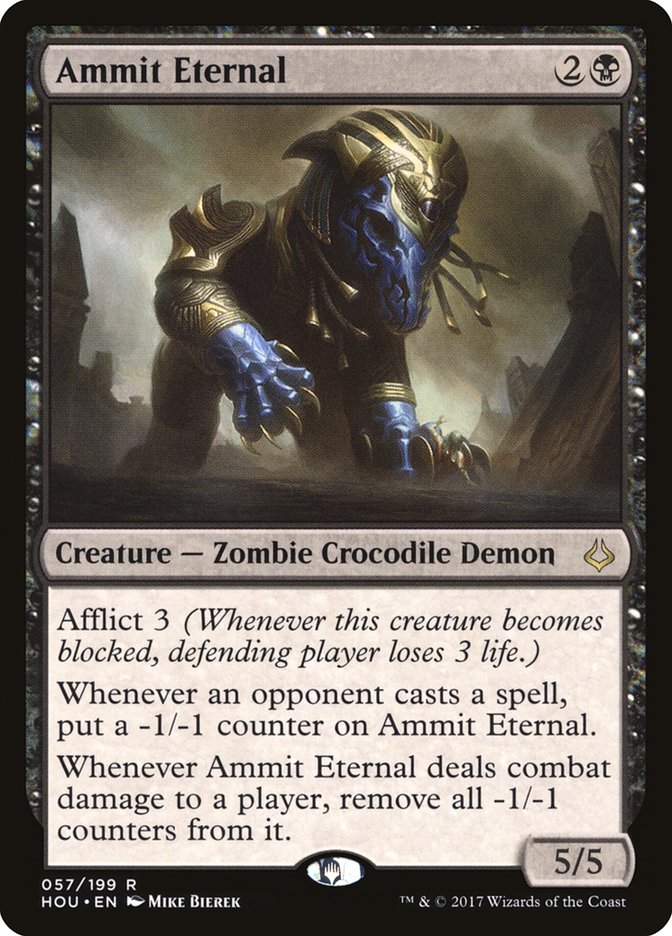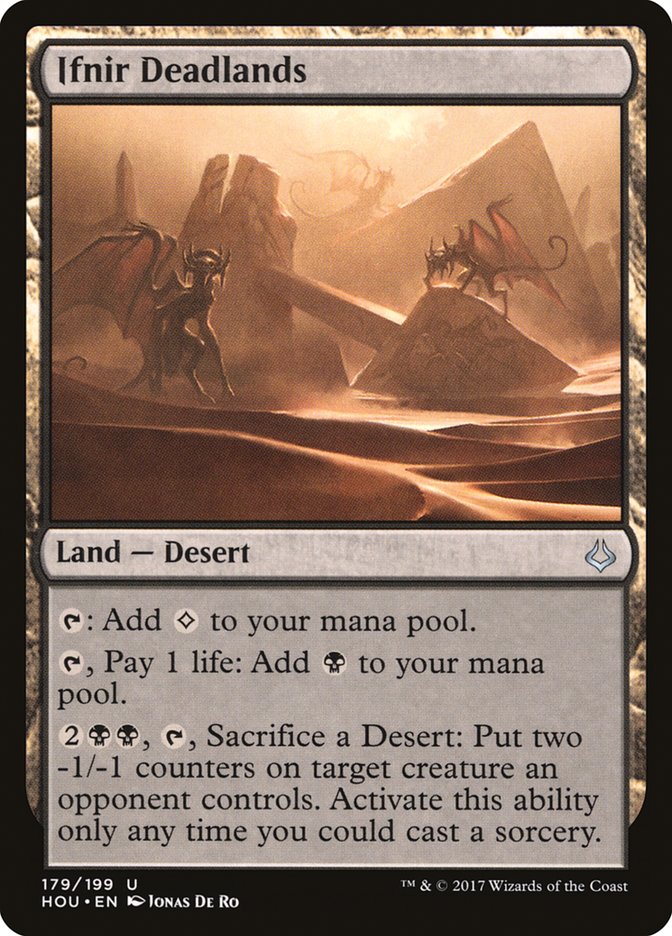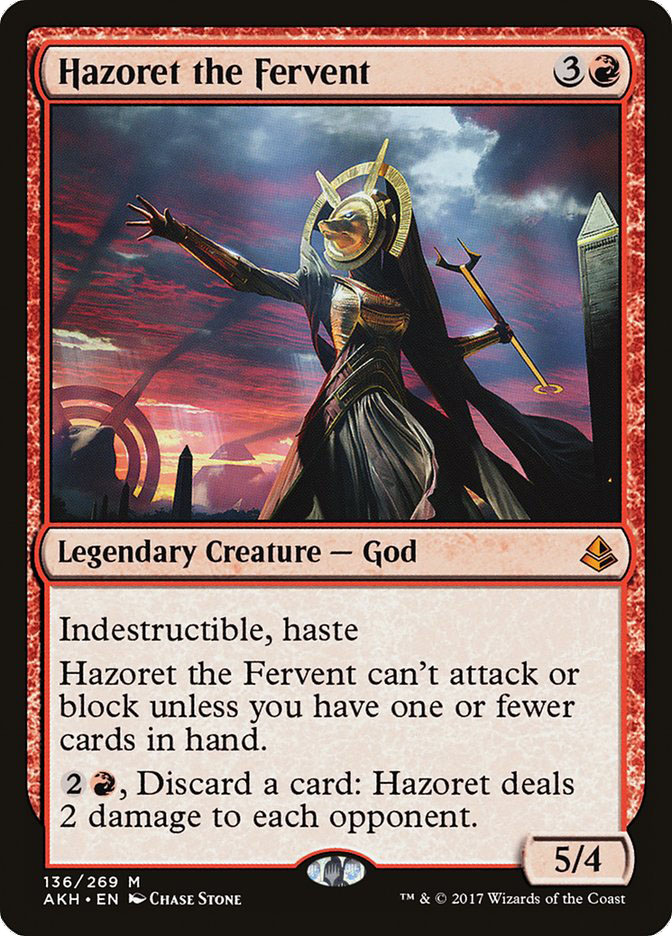In the days before Pro Tour Hour of Devastation, I spent a lot of time on Magic Online working on Standard decks, in part to try to be of use to some of my qualified friends, and in part because I just found myself loving Standard. There were many options to be chosen from, and it seemed like every day there were interesting things happening online. As Ross Meriam said, “Enjoy Standard while you can!” He called the format wide-open, but there was this expectation that once the Pro Tour hit, it would all be over. The format would be cracked, and we’d settle into a sale, boring metagame.
Initial responses to the Pro Tour seemed to essentially reinscribe this idea: Standard was basically all about red. Directly after the Pro Tour came the calls of how to beat the Red Menace, with cries of Top 8 dominance put forth as the proof that Standard was settled.
It definitely made me think of something fellow Madisonian Sam Black wrote in his tournament report talking about his own Top 8 with Ramunap Red:
“None of my other experiments were quite good enough[…I] didn’t know what to do. Gerry [Thompson] asked me why I didn’t just play red, and told me that I should, because it’s definitely the best deck.”
The Big Picture
Well, whether or not it is the best deck in a vacuum or the best deck for the event itself are two different questions. What isn’t debatable, though, is that Sam wasn’t alone in this assessment. A shocking 25% of the field agreed, with 115 of the 463 players all sleeving up Ramunap Ruins and Earthshaker Khenra.
This kind of deck adoption is shocking in such a diverse field. Fully six archetypes managed to make up more than five percent of the field, and three archetypes (including Ramunap Red) made up more than 10% of the field. That’s actually pretty impressive.
|
Archetype |
Players |
|
Ramunap Red |
115 |
|
Zombies |
64 |
|
B/G Constrictor |
45 |
|
Mardu Vehicles |
33 |
|
U/R Control |
29 |
|
G/R Ramp |
24 |
|
20 |
|
|
Temur Energy |
17 |
|
W/U Monument |
17 |
|
B/R Midrange |
16 |
|
Other |
85 |
There are several very interesting things to take note of.
First of all, red was so popular, it was more played than the next two most popular decks at the event combined. Having that kind of popularity edge basically says that there was a large consensus among pros: if you can’t beat it, join it.
Second, the two most popular decks after that are the only other decks to break the 10% mark: Zombies and B/G Constrictor. After that, we have a pretty decided drop to the remainder of our decks, with some classics – Mardu Vehicles and U/R Control – as the most popular in the field. My expectation is that these latter two decks were likely played by die-hard enthusiasts, who simply deeply knew the ins and outs of their deck. On the other hand, the popularity of Zombies and B/G Constrictor had to be in the context of successful red decks: I expect these decks were so popular because they fared well in testing overall as well as specifically versus red.
Finally, there is a great deal of diversity in the format overall. In fact, over 18% of the field was playing an archetype almost no one else was also playing. As a category, “Other” was more popular than everything but red decks! That is pretty extraordinary.
One of the things that happens with such a large category of miscellany is that we simply don’t have enough information to really judge certain decks. Is White Eldrazi actually the best deck in Standard? Maybe. It probably isn’t, but with so few people playing it, there isn’t a good way to tell with any certainty. It is the case that Eldrazi decks, as an overarching category, had several players finish with moderate success, but each of these decks was wildly different, and the two 7-3 Eldrazi decks were fully different colors.
We can be more confident in the data from widely played decks, like red, but it is worth noting a methodological problem common to all mixed format analyses: we simply cannot truly isolate one portion of the event from the other. In the course of a normal event, the nature of the Swiss pairings will tend to result in a true sifting and sorting of the best decks. However, the “cream rising to the top” feature of Swiss doesn’t work if you are putting another format in the mix. Yuchen Liu and Sam Black both went 8-2 with Ramunap Red, but that doesn’t mean that they experienced the same strength of opposition in Standard. The Draft rounds affect Swiss pairing, and one can play a 5-0 in Constructed while sitting next to a 1-4 in Constructed. This limitation can’t be solved for in our analysis, so we must just soldier on, and work with the data we have.
Let’s make a clear example of this in our best-finishing Standard player.
Creatures (26)
- 4 Falkenrath Gorger
- 4 Bomat Courier
- 3 Kari Zev, Skyship Raider
- 3 Hazoret the Fervent
- 4 Ahn-Crop Crasher
- 4 Soul-Scar Mage
- 4 Earthshaker Khenra
Lands (22)
Spells (12)

Arne is literally our only 10-0 Standard player at the end of Pro Tour Hour of Devastation. He closed out the day beating Mardu Vehicles and Temur Energy, but the previous three rounds of Standard before that, he defeated players who finished worse than 6-4 in Standard. Is Arne’s deck good? I believe so. It does, however, demonstrate that we aren’t fully sifting for any single format in mixed-format events. It is fairly unsurprising, then, to discover that in a method that tends to sort for the best player, we have such a seasoned pro at the top of it all.
Creatures (26)
- 4 Falkenrath Gorger
- 4 Village Messenger
- 4 Bomat Courier
- 3 Kari Zev, Skyship Raider
- 3 Hazoret the Fervent
- 4 Ahn-Crop Crasher
- 4 Earthshaker Khenra
Planeswalkers (2)
Lands (24)
Spells (8)

For those interested, a quick count of the top decks that finished 8-1-1 or better were:
Ramunap Red: 2
Zombies: 2
B/G Constrictor: 1
B/R Aggro: 1
We might call this “50% Red/66% anti-Red,” with one of those red decks being on both sides of the slash.
This forms a pretty cohesive microcosm of the event.
Looking Closer
It’s one thing to note how well-represented a deck is, but it is another thing entirely to compare a deck’s results to what we would expect it should have done, given the population of the deck. In a format where all matchups are 50/50, we would expect a final analysis that would roughly match up to the population of that deck.
For example, there were 115 Ramunap Red decks at Pro Tour Hour of Devastation. With 62.2% of players making Day 2, we’d expect 72 Ramunap Red players to make the second day. In reality, 84 did. Similarly, 33 should make 6-4 or better (but 39 did), seventeen should make 7-3 or better (but twenty did), and four should make 8-2 or better (but eight did); clearly Ramunap Red wasn’t just popular, but it was also an impressively overperforming deck.
But it wasn’t the only one.
Here is the breakdown of the entire event, by archetype:
| Day 1 | Day 2 | Conversion to Day 2 | Top 128 6-4+ | Conversion to 6-4+ | Top 64 7-3+ | Conversion to 7-3+ | Top 16 8-2+ | Conversion to 8-2+ | |
| Red | 115 | 84 | 73.0% | 39 | 33.9% | 20 | 17.4% | 8 | 7.0% |
| Zombies | 53 | 36 | 67.9% | 25 | 47.2% | 16 | 30.2% | 4 | 7.5% |
| Zombies (U/B) | 9 | 4 | 44.4% | 1 | 11.1% | 1 | 11.1% | 0.0% | |
| B/G Constrictor | 45 | 35 | 77.8% | 22 | 48.9% | 10 | 22.2% | 3 | 6.7% |
| Mardu Vehicles | 33 | 20 | 60.6% | 9 | 27.3% | 5 | 15.2% | 1 | 3.0% |
| U/R Control | 29 | 19 | 65.5% | 6 | 20.7% | 3 | 10.3% | 0.0% | |
| G/R Ramp | 24 | 15 | 62.5% | 4 | 16.7% | 3 | 12.5% | 0.0% | |
| God-Pharaoh’s Gift | 20 | 12 | 60.0% | 4 | 20.0% | 0 | 0.0% | 0.0% | |
| Temur Energy | 17 | 11 | 64.7% | 8 | 47.1% | 4 | 23.5% | 1 | 5.9% |
| W/U Monument | 17 | 7 | 41.2% | 1 | 5.9% | 0.0% | 0.0% | ||
| B/R Midrange | 16 | 7 | 43.8% | 2 | 12.5% | 0 | 0.0% | 0.0% | |
| Pummeler Decks | 9 | 5 | 55.6% | 2 | 22.2% | 1 | 11.1% | 0.0% | |
| R/B Aggro | 7 | 6 | 85.7% | 3 | 42.9% | 2 | 28.6% | 1 | 14.3% |
| OTHER | 69 | 27 | 39.1% | 8 | 11.6% | 5 | 7.2% | 0.0% | |
| Total Players | 463 | 288 | 62.2% | 134 | 28.9% | 70 | 15.1% | 18 | 3.9% |
Highlighted in orange at the bottom is the expected result for competing at Pro Tour Hour of Devastation. The data points which are highlighted in blue are those decks which outperformed the expected finish of every player in the tournament, with green for those where there can be less confidence in this metric: either a single competitor outperforming with their archetype, an archetype slightly outperforming the average, or a Day 2 conversion that would go above or below the line with the change of one competitor’s result.
One important measure: if an archetype is doing worse than the orange percentage, a typical player playing that deck would do better to swap decks with a random competitor in the room.
A few conclusions jump out immediately.
Big Losers: God-Pharaoh’s Gift and Oketra’s Monument
This may have been a big surprise. Both of these decks have been making huge splashes up until now, but they put up horrific numbers despite having reasonably sizable amounts of people playing them. These decks collectively got clobbered, with literally no one getting a seventh win, despite having 37 players between the two decks.
There was a fair bit of buzz about both of these archetypes as of late, but the Red Tide swept them away, likely because of the overall popularity of one of the best cards in the set, Abrade.
Also purely underperforming were B/R Midrange and various Electrostatic Pummeler decks, but these decks neither had the buzz about them that God-Pharaoh’s Gift and Oketra’s Monument had, nor did they have nearly as many people playing them.
Big, Big Winners: Popularity Equals Success
Ramunap Red, Zombies, and B/G Constrictor were not just the most popular decks, but they were also head and shoulders the most clearly successful.
Now, it might not shock you that the most popular decks were also the most successful, but it actually does shock me. I’ve been doing analytics on Pro Tours for years, and I think this might literally be the first time I’ve seen this happen. Usually, you see results like I found for Pro Tour Fate Reforged, where literally the majority of the popular decks were either adequate or even underperformed.
I think that this didn’t happen at this Pro Tour because Ramunap Red was so clearly incredible that it knocked out a ton of options for serious competitors. For those going a different direction, they likely found success with Zombie and B/G Constrictor for that matchup, which translated to tournament success, especially with the rampant popularity of red decks.
The story in the detail of these two foil decks is interesting. B/G Constrictor was far more successful at “bare bones” success, with the highest conversion rate of a popular deck into making Day 2 and the highest conversion rate period for having a winning record. However, it didn’t excel and maintain that grand superiority at the highest levels – it was “only” very good by these measures, rather than “the best.”
Creatures (20)
- 2 Kalitas, Traitor of Ghet
- 3 Tireless Tracker
- 4 Grim Flayer
- 2 Verdurous Gearhulk
- 4 Winding Constrictor
- 1 Rishkar, Peema Renegade
- 4 Walking Ballista
Planeswalkers (5)
Lands (23)
Spells (12)

Conversely, Zombies (isolated in our data as Mono-Black Zombies instead of B/U Zombies) was not successful for as many people, but for those players, it was resoundingly more successful.
In fact, Zombies was overwhelmingly the deck that produced the greatest number of excellent results. An astounding 30% of Zombies players made 7-3 or better, a success rate nearly double that of Ramunap Red. While Ramunap Red bounced back to a similar success rate at 8-2 or better, it still didn’t catch up to Zombies.
But however you slice it, both Zombies and B/G Constrictor outperformed Ramunap Red.
Take note, all ye who care about Standard.
Creatures (23)
- 3 Kalitas, Traitor of Ghet
- 4 Relentless Dead
- 4 Diregraf Colossus
- 4 Cryptbreaker
- 4 Lord of the Accursed
- 4 Dread Wanderer
Lands (24)
Spells (13)

Perhaps Yusuke Sasabe only missed on being a Pro Tour champion because he had the misfortune of not fighting against Ramunap Red in the quarterfinals? Who can say?
Creatures (23)
- 3 Kalitas, Traitor of Ghet
- 4 Relentless Dead
- 4 Diregraf Colossus
- 4 Cryptbreaker
- 4 Lord of the Accursed
- 4 Dread Wanderer
Lands (25)
Spells (12)

B/U Zombies wildly underperformed, but this build managed an impressive 7-3 finish. There are no other examples to compare it to that were published, but I suspect that the reason that multicolor decks didn’t succeed as well is simple consistency.
The Little Winner: A Better Red
R/B Aggro decks only had a handful of players playing them, and yet had numbers that outpaced straightforward Ramunap Red by every blunt metric.
Creatures (25)
- 2 Eldrazi Obligator
- 4 Falkenrath Gorger
- 4 Bomat Courier
- 2 Kari Zev, Skyship Raider
- 3 Hazoret the Fervent
- 2 Soul-Scar Mage
- 4 Earthshaker Khenra
- 4 Ammit Eternal
Lands (23)
Spells (12)

However, with so few players – only seven – playing this archetype, it becomes hard to have a proper degree of certainty whether that would hold up with a larger population, or whether it was just the shake of randomness playing out.
Many of these builds looked a little less like Ramunap Red than Kurata’s build, including cards like Dread Wanderer, but however they were built, the access to Hour of Devastation‘s black cards seemed critical. Ammit Eternal and Ifnir Deadlands are simply remarkable cards, and that is without even stepping into how Collective Brutality messes with an aggressive mirror that might care about hand size.
“Present!” – Underwhelming Results
Mardu Vehicles, U/R Control, and G/R Ramp all showed up with relatively high numbers, and basically either barely performed or underperformed.
Creatures (19)
- 4 Thraben Inspector
- 1 Filigree Familiar
- 3 Glint-Nest Crane
- 3 Scrapheap Scrounger
- 4 Toolcraft Exemplar
- 4 Walking Ballista
Planeswalkers (4)
Lands (23)
Spells (14)

This was the top Mardu Vehicles deck, finishing at 8-2, but it was also notably the only version that splashed for blue. Maybe the Glint-Nest Crane concept is the direction that this archetype needs to go for success in the current Standard, but clearly something needs to be done, as the archetype otherwise languished.
At least Mardu had a representative among the top decks, though. Neither U/R Control nor G/R Ramp managed an 8-2 finish despite each deck having over twenty people playing it.
Quiet Success: Temur Energy
While Temur Energy didn’t have a breakout finish, it was very respectable, roughly keeping pace with Ramunap Red, though with too small a player base for there to be confidence in the final results.
Here is the top-finishing Temur Energy deck:
Creatures (18)
Planeswalkers (3)
Lands (22)
Spells (17)

Perhaps the real shocker in this list is this little artificer:
This list led the pack for Temur Energy, at 8-2. While the specifics of each of the eight Temur Energy lists with winning records vary slightly, Joe Lam’s build is probably the wildest. First strike is a powerful ability, as is creating 1/1 creatures, even if they are but lowly Servos. Is Aether Chaser good or merely cute? I don’t know, but I know I’ll be trying it out soon.
Final Thoughts
Based on the data we have, I feel comfortable saying that there are only a few archetypes you should be considering in Standard right now if you want to be highly competitive:
Ramunap Red
Ramunap R/B
Mono-Black Zombies
B/G Constrictor
Temur Energy
This doesn’t mean you are forbidden by The Gods of Data from playing another archetype. If you want to play another archetype, do it! But just be warned that you must do something significantly different enough from what others are already doing for it to make sense.
As for me, I’m working on four decks: Ramunap Red, Big Ramunap Red, B/G Constrictor, and Temur Control (because I’m a glutton for punishment). By the time you read this, I hope to have it all worked out, but I know that until then, you can likely find me either playtesting or coming through more data.


